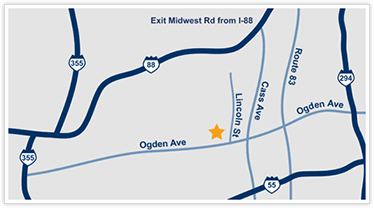What Is a Lithograph?
You’ve likely heard the term “lithograph” used in connection with the world of fine art. From works created by Currier & Ives and Pablo Picasso to Gheorghe Virtosu and Marc Chagall, lithography has enjoyed a long, celebrated history. Today, highly sought-after lithographic works can fetch prices ranging from $76,000 to more than $900,000.
An original lithograph is a work of art produced using an oil, ink, and water medium to transfer an original image created on a piece of stone to a piece of paper. The stone must be reinked every time it is applied to paper in order to transfer the image from the stone to the paper. Unlike an original lithograph, an offset print is produced using a mechanical process that uses an inked rubber blanket or roller to produce the desired image.
What Is the History Behind Lithography?

Around 1796 in present-day Germany, a relatively unknown Bavarian playwright named Alois Senefelder discovered lithography by accident, according to The Metropolitan Museum of Art. Senefelder discovered that he could make copies of his playwriting scripts by using a greasy crayon on slabs of limestone to write them. Using rolled-on ink applied over the crayon marks, Senefelder found he could print his scripts in quantity. The limestone retained the crayon markings applied to the stone’s surface so well, even after repeated ink applications and printing, that Senefelder could produce his prints almost limitlessly.
Creating a Lithograph
The term “lithograph” comes from the Greek words for “stone” and “to write.” Creating a lithograph involves several key steps to turn an original design into a printed image:
- A lithographic artist draws an image onto a stone using a grease-based instrument, such as a special lithographic crayon or a greasy ink substance known as tusche.
- A chemical solution is applied to the stone. This solution preps the image for receiving lithographic printing ink. Blank areas of the image repel the ink and attract water.
- Next, a solvent stabilizes the image to prevent shifting. The entire surface of the image is then dampened with water.
- A lithographer applies oil-based ink to the stone using a roller. The treated image receives the ink application.
- The stone is placed on a lithographic press, covered with a piece of damp paper, and weighted with a board. A pressure bar is placed on top of the board, applying force evenly across the board, to produce the image. Separate stones are used to add multiple colors to the image, which results in a more complex and intricate design.
Notable Lithographic Artists
Lithography found its niche in artistic and commercial applications. Illustrators and portrait artists eagerly embraced lithography for the ease of its graphic production, including the following:
- Romantic painters such as Theodore Gericault and Eugene Delacroix turned to lithography to achieve dramatic effects in their works.
- Edgar Degas detailed artificial and natural light in night landscapes.
- James Abbott McNeill Whistler used lithography to create entrancing seascape scenes.
- Henri de Toulouse-Lautrec, perhaps one of the most well-recognized lithographic artists, made his claim to fame with lithography in 1891 with his poster for the Moulin Rouge.
Advances in printing technology toward the end of the late 19th century further popularized the use of lithography for many purposes beyond art itself. Advertising, illustrated books, and other media brought lithographic images to the masses.
What Is a Hand-Pulled Lithograph vs. an Offset Print?
As you study lithographic works, you’ll encounter the terms offset print and hand-pulled lithographs, but what’s the difference between the two?
Hand-Pulled Lithography
To create a hand-pulled lithograph, a lithographic artist first draws or paints an image directly onto the element used for printing, such as a stone, an aluminum plate, or a piece of Mylar. The drawing receives its application of ink; multiple inks require a drawing per ink color. The drawing is then pulled by hand, one color at a time, through a press to produce the desired image.
Offset Print
An offset print is created using offset printing technology. To create an offset print, a lithographer transfers ink to a rubber blanket or roller. This rubber blanket or roller is then applied to a stone or a piece of paper. Due to the nature in which offset prints are created, the prints themselves tend to feature variations in color from the original work. Since this method does not involve the amount of labor required to create a work by hand, offset prints tend to be less expensive to purchase than hand-pulled lithographs.
How Can You Tell the Difference Between a Lithograph and a Print?
When is a lithograph not a print, and when is a print not a lithograph? To the untrained eye, the two types can appear very similar to one another, but upon closer inspection, subtle details can help you distinguish between an offset print and a hand-pulled lithograph.
- Discoloration: Look for chemical oxidation and imperfections in areas where no image is present. These areas of discoloration can occur when aluminum printing plates used in offset printing are not maintained, which causes the discolored markings.
- Rows of dots: Offset printing features a dotted circular pattern in rows on the image. In contrast, a lithograph created by hand will feature dots in a random ink pattern. To see these dots, you’ll need to use a magnifying glass.
- Signature: Hand-pulled lithographs will generally bear the signature of its creator somewhere on the work — often on the back. Offset prints and reproductions of lithographs will generally not be signed.
- Ink thickness: When you lightly rub your hand over the surface of an original lithograph, you should feel a slightly raised surface. In contrast, offset prints will have a flat ink surface. Note: To avoid damaging any piece of art through handling, always wear a pair of archival gloves when touching the material.
Appraise and Sell Your Lithograph in Chicagoland
While obtaining and identifying lithographs can seem daunting, knowing the history of this art form and the different types of lithographs available can help you whether you’re selling works or buying lithographs for your collection. At Americash Jewelry & Coin Buyers, we are always interested in buying lithographs created by artists such as Marc Chagall, Pablo Picasso, Alexander Calder, Salvador Dalí, and others.
If you have a lithograph that you’d like us to examine for you, bring it to our Westmont, Illinois, facility at 16 W. Ogden Ave. You can also contact us via our website, or call 630-969-9600.
Tags: Lithographs, Lithography, Prints



